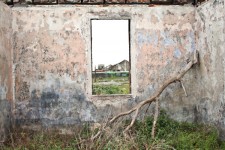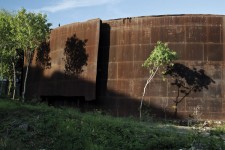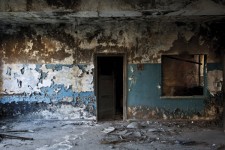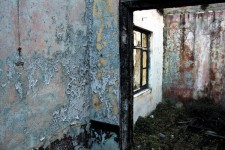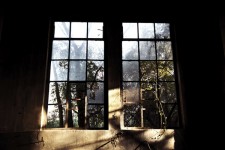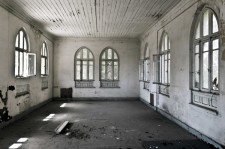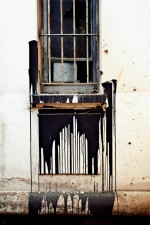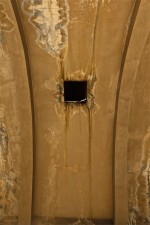This project focuses on the effects of nature in abandoned buildings. By using social, political and psychic contexts, it aims to show the living traces and evoke the past. This projects connects with human activities in the past and the present. Its subject matter is 'traces'. These traces become visible varyingly in each photograph. Basically‚ nature is not just green. Layers of worn out paints‚ fuliginous walls‚ broken windows and growing plants are among the common effects of nature. These traces symbolize the four elements of nature: water‚ air‚ fire and soil.
Common details of these elements as they appear in the photographs represent a relationship between the man-made and the natural. Such effects of nature is a work in progress which rubs out the traces of past activities from man-made structures. This is the tension embodied in abandoned buildings since nature's desire for destruction simultaneously recreates new spaces. These spaces are significant examples of the relationship between human beings and nature.
The pictorial is the method of picture making in these photographs since it helps re-creating past activities and conditions. This technique is chosen to document the textures. Frame in frame photographs generally creates the effect of inside-outside ambiguity, and “outside in inside out” visions are created in this way. Spacial ambiguities are used to show the alteration and instability of buildings.
Buildings depicted in the photographs are all German built industrial spaces constructed in the late 19thcentury Istanbul‚ Ottoman Empire. One of the reasons for focusing on these spaces is to trigger the audience to re-imagine the nostalgic Ottoman industrialization period in which one can find the cultural memory of factories cross-cutting class and age. Embedded in the dust of these buildings is the melancholy of late Ottoman industrialism which helps to re-imagine forgotten memories.
